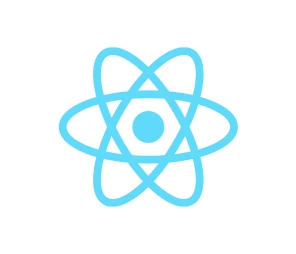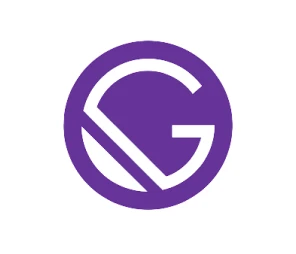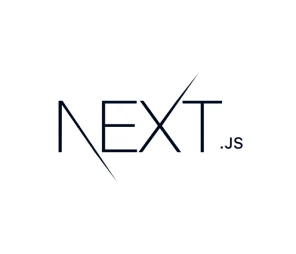Web development has come a long way in recent years, and with so many frameworks and tools available, it can be difficult to decide which one to choose for a particular project. React.js vs Gatsby vs Next.js are three popular frameworks that are commonly used in web development. Each of these frameworks has its unique features and capabilities, and choosing the right one can make a significant difference in the success of a project.
In this article, we will explore the differences between React.js, Gatsby, and Next.js, and provide guidance on which framework to choose for different types of web development projects. We will also discuss the pros and cons of each framework and highlight examples of popular websites built using these frameworks. Whether you’re a beginner or an experienced developer, this article will provide valuable insights into the world of web development frameworks and help you make an informed decision when choosing a framework for your next project.
What is React.js?

React.js is a JavaScript library that is used for building user interfaces (UIs) in web applications. It was developed by Facebook and is now maintained by a community of developers. React.js works by breaking down a UI into small, reusable components, each of which manages its state and can be combined with other components to create more complex UIs.
What is Gatsby?

Gatsby is a free and open-source framework built on top of React.js that is used for building modern, fast, and scalable websites and web applications. Gatsby is designed to help developers build static websites that are optimized for performance and SEO, while also allowing for dynamic content and functionality through APIs and serverless functions.
What is Next.js?

Next.js is a free and open-source framework built on top of React.js that is used for building server-side rendered (SSR) and static websites and web applications. Next.js provides a set of tools and features that allow developers to build highly performant and scalable websites, while also making it easy to implement features such as routing, server-side rendering, and API routes.
Pros & Cons Of React.js vs Gatsby vs Next.js
React.js, Gatsby, and Next.js are all popular frameworks used for building web applications with JavaScript. Here are the pros and cons of each:
React.js:
Pros:
- React is widely used and has a large community of developers and resources available.
- It is flexible and can be used for a variety of projects, from small to large-scale applications.
- React has a virtual DOM, which can improve performance and make it easier to manage updates.
- It can be easily integrated with other libraries and frameworks.
Cons:
- React doesn’t have built-in routing or server-side rendering, so developers need to add these features separately.
- React can be more difficult to learn and use for beginners, as it requires knowledge of JavaScript and JSX syntax.
Gatsby:
Pros:
- Gatsby is a popular static site generator that can be used to build fast, SEO-friendly websites.
- It has a built-in GraphQL layer that makes it easy to source data from multiple APIs and databases.
- Gatsby can be used with React, making it easy to integrate with other React components and libraries.
- Gatsby has a large community of developers and resources available.
Cons:
- Gatsby may not be as flexible as other frameworks, as it is designed specifically for building static sites.
- It can take longer to set up and configure Gatsby than other frameworks.
- Gatsby may not be the best choice for large-scale applications with complex data requirements.
Next.js:
Pros:
- Next.js is a popular framework for building server-side rendered React applications.
- It has built-in routing and server-side rendering, which can improve performance and SEO.
- Next.js can be used with other popular frameworks and libraries, such as Redux and TypeScript.
- It has a large community of developers and resources available.
Cons:
- Next.js may not be the best choice for small-scale projects, as it can add complexity and overhead.
- Developers need to have a solid understanding of React and server-side rendering to use Next.js effectively.
- Next.js may not be the best choice for projects with very specific requirements, as it has a specific set of features and limitations.
Examples of popular websites built using React.js
React.js is a popular library for building modern web applications, and it’s used by many popular websites and web applications. Here are some examples of well-known websites that use React.js:
- Facebook – React.js was created by Facebook to help them build their web applications, including the Facebook website itself.
- Instagram – Instagram, which is also owned by Facebook, uses React.js for its web interface.
- Netflix – Netflix uses React.js for building its website and for developing its user interface components.
- Airbnb – Airbnb uses React.js for building its website and for developing its mobile apps.
- Dropbox – Dropbox uses React.js for its web interface, including the Dropbox Paper document editor.
- Atlassian – Atlassian, which develops popular tools like Jira and Confluence, uses React.js for building its web applications.
- Uber – Uber uses React.js for its web interface, including the Uber Eats food delivery service.
- New York Times – The New York Times uses React.js for building its website and for developing its mobile apps.
Examples of popular websites built using Gatsby
Gatsby is a popular static site generator that is used to build high-performance web applications. Many well-known websites use Gatsby to build their websites, and here are some examples:
- Figma – Figma, a popular design tool, uses Gatsby to build its website.
- Pizza Hut – Pizza Hut uses Gatsby to build its website and offer online ordering.
- Codecademy – Codecademy, an online learning platform, uses Gatsby to build its website.
- Sony Music – Sony Music uses Gatsby to build its website and showcase its music artists.
- Adidas – Adidas uses Gatsby to build its website and offer online shopping.
- SendGrid – SendGrid, an email delivery service, uses Gatsby to build its website.
- IBM – IBM uses Gatsby to build its website and showcase its products and services.
Examples of popular websites built using Next.js
Next.js is a popular framework for building server-side rendered (SSR) React applications. Many well-known websites use Next.js to build their websites, and here are some examples:
- Twitch – Twitch, a popular live streaming platform, uses Next.js for its web interface.
- Hulu – Hulu, a popular video streaming service, uses Next.js for its web application.
- GitHub – GitHub, a popular code hosting and collaboration platform, uses Next.js for its marketing websites.
- The Washington Post – The Washington Post, a major US newspaper, uses Next.js for its website.
- Nike – Nike uses Next.js to build its online store and showcase its products.
- Mashable – Mashable, a popular news and entertainment website, uses Next.js for its website.
- Slack – Slack, a popular workplace messaging platform, uses Next.js for its marketing websites.
- Twilio – Twilio, a cloud communications platform, uses Next.js for its marketing websites and developer documentation.
Basic Difference between React.js Vs Gatsby vs Next.js
| Feature | React.js | Gatsby | Next.js |
|---|---|---|---|
| Main purpose | Building user interfaces | Static site generator | Server-side rendering |
| Language | JavaScript | JavaScript | JavaScript |
| Learning curve | Steep | Moderate | Moderate |
| Performance | Depends on implementation | Excellent for static sites | Excellent for server-side rendering |
| SEO | Not optimized out of the box | Excellent out of the box | Excellent out of the box |
| Data fetching | Must be implemented manually | Can use GraphQL and other data sources | Can use API routes and other data sources |
| Plugins and extensibility | Can use libraries and plugins to extend functionality | Extensive plugin ecosystem | Can use middleware and other extensibility options |
| Deployment | Can be deployed to any web server or CDN | Can be deployed to static site hosts like Netlify | Can be deployed to any web server or platform |
| Popular use cases | Large-scale web applications | Static sites and blogs | Server-rendered web applications |
React.js is best suited for building large-scale web applications, while Gatsby is ideal for creating static sites and blogs. Next.js is the best option for server-side rendering and building server-rendered web applications.
When to use Gatsby vs Next.js vs React.js: What are their strengths and weaknesses?
Let’s discuss some considerations that can help you decide when to use Gatsby, Next.js, or React.js based on your project requirements.
1.React.js –
Strengths:
a. Component-Based Architecture: React’s component-based architecture promotes reusability, maintainability, and scalability.
b. Virtual DOM: The use of a virtual DOM ensures optimal performance by minimizing unnecessary re-renders.
c. Large Ecosystem: React has a vast ecosystem with a multitude of libraries and community support.
Weaknesses:
a. Learning Curve: Beginners may find React challenging initially due to its concepts such as JSX, state, and props.
b. Configuration: React is just a library, so developers need to configure additional tools for routing, server-side rendering, and other functionalities.
2.Gatsby
Gatsby is a static site generator built on top of React, designed to create performant and optimized websites.
Strengths:
a. Performance: Gatsby excels in performance by generating static HTML files, resulting in faster page loads.
b. SEO-Friendly: Static sites are inherently SEO-friendly, and Gatsby optimizes further by pre-fetching resources. c. GraphQL Integration: Gatsby seamlessly integrates with GraphQL, enabling efficient data fetching and manipulation.
Weaknesses:
a. Dynamic Content: Gatsby is less suited for dynamic content that requires real-time updates, as it generates static sites during build time.
b. Learning Curve: Developers need to grasp GraphQL concepts for effective data querying and manipulation.
3.Next.js
Next.js is a React framework that simplifies server-side rendering and provides a robust solution for building React applications.
Strengths:
a. Server-Side Rendering (SSR): Next.js excels in SSR, improving performance and enabling search engine crawlers to index dynamic content.
b. Easy Routing: Next.js simplifies routing by following the file system structure, making it intuitive and developer-friendly.
c. Automatic Code Splitting: The framework automatically splits code into smaller chunks, optimizing performance by loading only what’s necessary.
Weaknesses:
a. Complexity: Next.js may introduce additional complexity, especially for small projects, where the benefits of SSR might not be fully utilized.
b. Build Time: Generating pages during build time can result in longer build times for larger projects.
Choosing the Right Framework:
- Use React.js When:
- You need a flexible and scalable library for building user interfaces.
- Your project requirements don’t necessitate server-side rendering or static site generation.
- Use Gatsby When:
- Building a static website or a blog where content doesn’t change frequently.
- Prioritizing performance and SEO is crucial.
- Use Next.js When:
- Server-side rendering is essential for your application.
- You want an easy-to-use framework that streamlines routing and code splitting.
Which framework is more likely to be future-proof in 2024 and beyond?
According to the strengths and weaknesses of each framework, we can make an informed assessment of their future-proofing potential in 2024 and beyond. In 2024, Between React.js, Gatsby, and Next.js, React.js is likely to remain a significant player, given its versatility, strong community, and widespread adoption. It provides a solid foundation for building modern user interfaces. On the other hand Next.js, with its focus on dynamic web development, server-side rendering, and ease of adoption, is likely to remain relevant as demand for such features persists, Gatsby’s emphasis on performance and SEO aligns with persistent industry priorities.
Which framework is better for SEO: Gatsby, Next.js, or React.js?
With the rise of JavaScript frameworks like React.js, Next.js, and Gatsby, developers now have powerful tools at their disposal to create dynamic and engaging web experiences. However, when it comes to SEO, choosing the right framework can make a significant difference in how well your website ranks in search engine results.
Search engines like Google use complex algorithms to determine the relevance and authority of web pages, ultimately influencing their ranking in search results. Key factors that impact SEO include website speed, mobile-friendliness, content quality, backlinks, and user experience. Therefore, it’s essential to choose a framework that not only facilitates smooth development but also prioritizes these SEO factors.
If performance and static site generation are top priorities, Gatsby’s optimized build process and SEO plugins make it an excellent choice. For projects that require dynamic rendering and server-side rendering, Next.js offers robust SSR capabilities to enhance SEO performance. Alternatively, React.js provides flexibility for developers to implement custom SEO solutions tailored to their unique needs.
React.js, Gatsby, and Next.js: What to Choose in 2024?
When it comes to choosing the right framework for your web application, there are several factors to consider. In this section, we’ll take a closer look at some of the key considerations when choosing between React.js, Gatsby, and Next.js, and provide recommendations for which framework to use based on specific project needs.
-
Project complexity:
The complexity of your project is an important factor to consider when choosing a framework. If you’re building a simple website or web application, React.js might be the most appropriate choice. However, if you’re building a more complex web application that requires server-side rendering or static site generation, Gatsby or Next.js might be a better fit.
-
Performance optimization
All three frameworks offer some degree of performance optimization, but Gatsby and Next.js have a specific focus on performance. If you’re building a web application that requires high performance, Gatsby or Next.js might be a better choice.
-
SEO optimization
If SEO optimization is a key consideration for your project, Gatsby or Next.js might be a better fit. Both frameworks offer server-side rendering and static site generation, which can help to improve SEO by making it easier for search engines to index your site.
-
Developer experience
If you’re already familiar with React.js and prefer to stick with what you know, React.js might be the most appropriate choice. However, if you’re looking for a framework that offers more out-of-the-box features and capabilities, Gatsby or Next.js might be a better fit.
Based on these factors, here are our recommendations for which framework to use based on specific project needs:
- If you’re building a simple website or web application and don’t require server-side rendering or static site generation, React.js might be the most appropriate choice.
- If you’re building a web application that requires high performance and SEO optimization, and you’re comfortable with a more complex setup, Gatsby might be the best choice.
- If you’re building a web application that requires high performance and SEO optimization, and you’re looking for a simpler setup, Next.js might be the best choice.
Ultimately, the choice of framework depends on the specific needs of your project. By considering factors such as project complexity, performance optimization, SEO optimization, and developer experience, you can make an informed decision about which framework to use.
Hire Top-Notch Developers Within A Week
If you’re looking to take your business to the next level, it’s time to consider hiring remote developers from GraffersID. With our team of experienced developers, we can help you build scalable and reliable software solutions that will enhance your business operations and improve your bottom line. Our developers are skilled in a wide range of programming languages and frameworks and can work seamlessly with your team to deliver results that exceed your expectations. So why wait? Contact us today and take the first step toward success!




